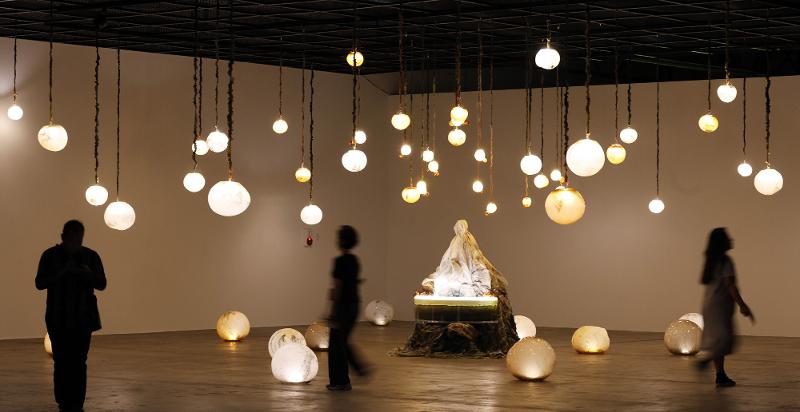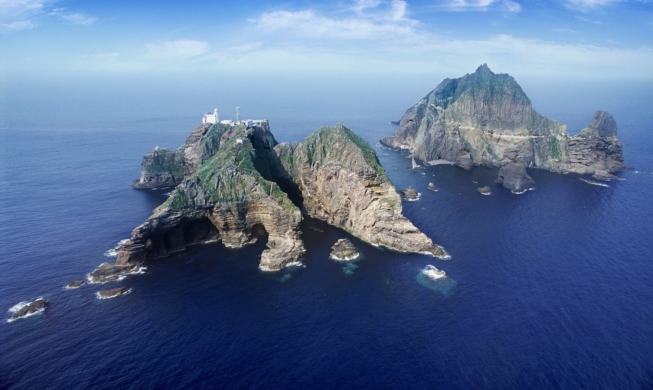
Invited domestic and foreign reporters on Sept. 6 look at "Stirs" by French artist Marguerite Humeau at the opening ceremony of this year's Gwangju Biennale in the nation's sixth-largest city of Gwangju. (Yonhap News)
By Yoo Yeon Gyeong
This year's Gwangju Biennale on Sept. 6 was opened at Gwangju Biennale Exhibition Hall of Jungoe Park in Gwangju's Buk-gu District.
Held under the theme "Pansori: A Soundscape of the 21st Century," the gala's 30th edition runs for 86 days from Sept. 7 to Dec. 1.
World-renowned art director Nicolas Bourriaud and 72 artists from 30 countries are participating to showcase contemporary art by combining sound (music and acoustics) and visual elements.
The exhibition hall, the event's main venue in the city's Buk-gu District, expands the rapidly changing world through audio and emotions through the three sound sections of collision, overlapping and first sound.
The biennale's eight exhibition venues in the Yangnim-dong neighborhood area of Nam-gu District are Yangnim Culture Centre, Podonamu Art Space, Han Boo Chul Gallery, Han Hee Won Museum of Art, Yangnim Salon, Yangnim Old Police Station, Empty House and Horanggasinamu Art Polygon.
They suggest the potential for coexistence and solidarity between art and life by installing works in everyday spaces.
The Gwangju Biennale Pavilion, a place for international exchange of culture and arts, features a record-high 31 pavilions (22 national and nine institutional and municipal) to show the multilayered flow of contemporary art.
Gwangju Biennale Foundation President Park Yang-Woo said, "We expect the 15th Gwangju Biennale to become a turning point to reaffirm the event's essence and offer an opportunity for Gwangju's rebirth as a city that represents Asia in name and reality."
dusrud21@korea.kr
Most popular
- Grammy-winning producer calls Suga of BTS 'amazing artist'
- 'Universal love, family' themes fuel success of 'King of Kings': director
- Council sets minimum hourly wage in 2026 at KRW 10,320
- Expansion of foreign app system raises tourist convenience
- Nat'l population diversity rose nearly 8% from 2018-22: study
